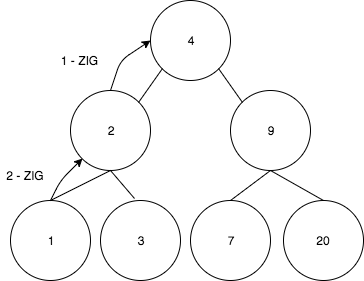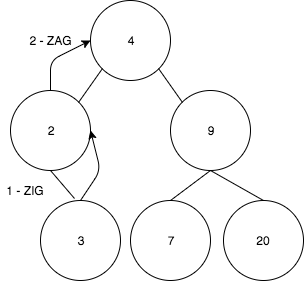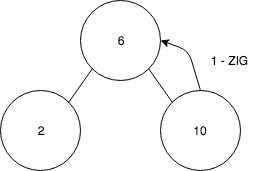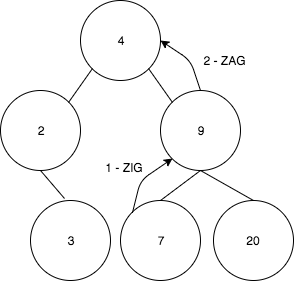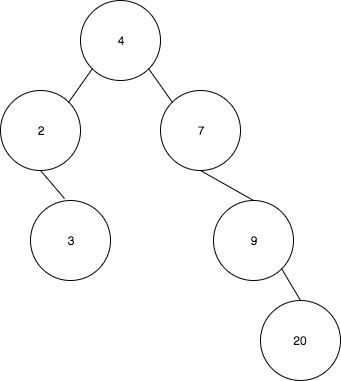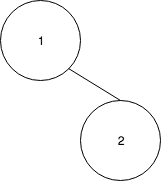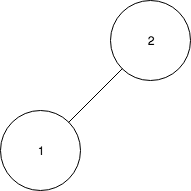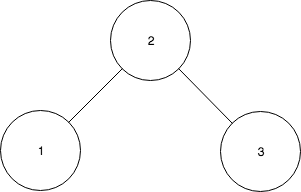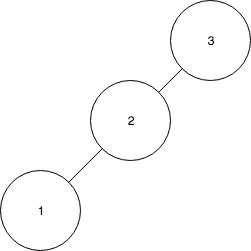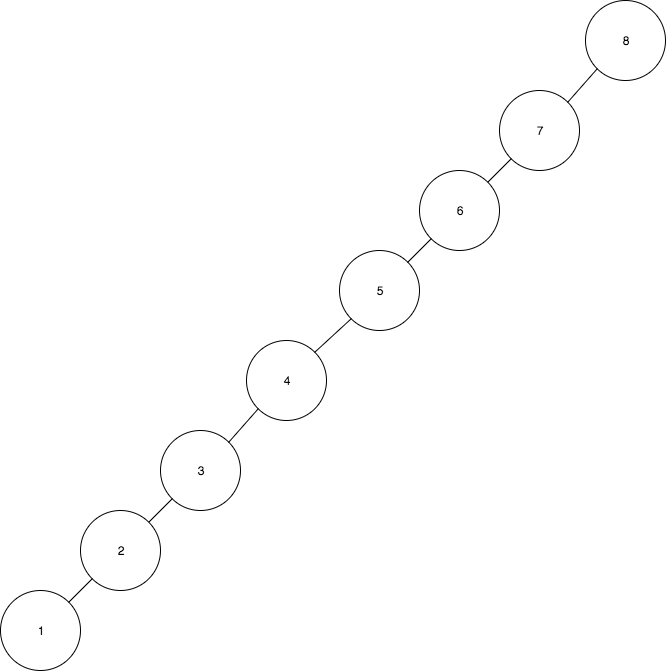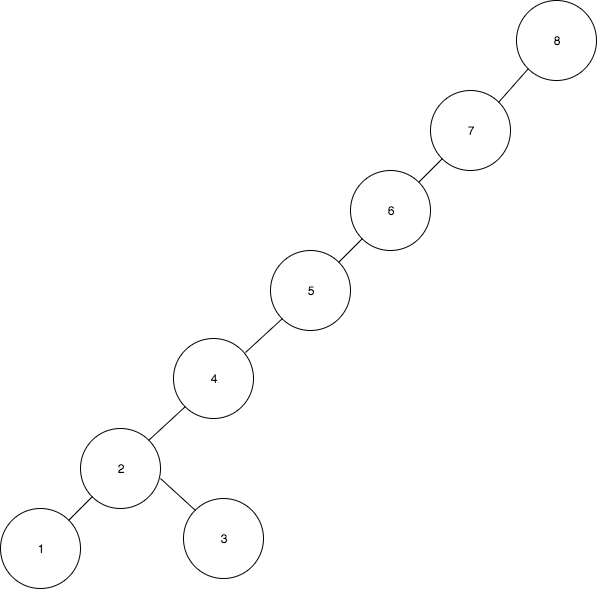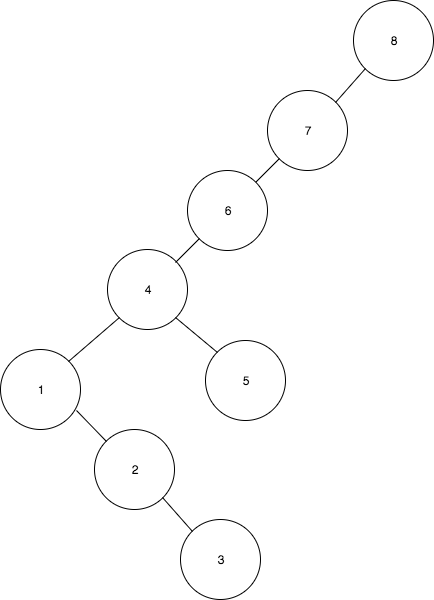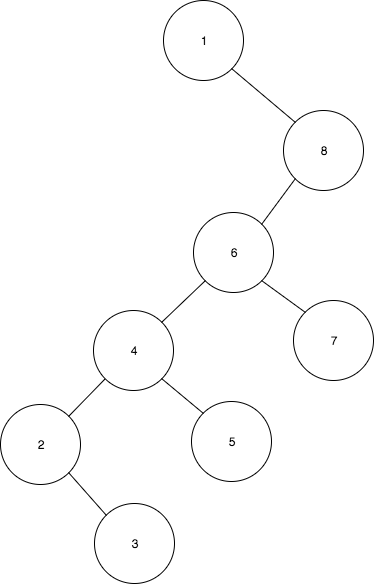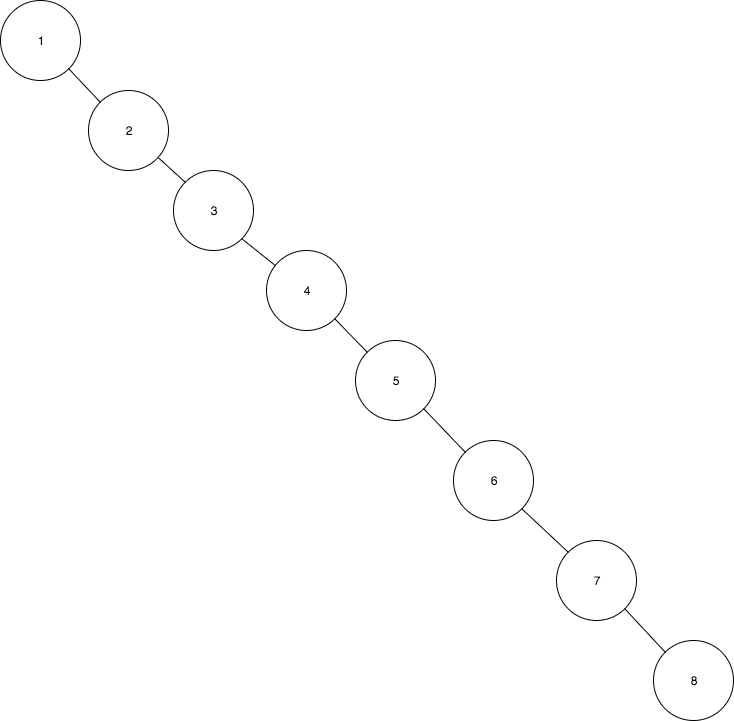Splay Tree
Splay tree is a data structure, structurally identitical to a balanced binary search tree. Every operation performed on a Splay Tree causes a readjustment in order to provide fast access to recently operated values. On every access, the tree is rearranged and the node accessed is moved to the root of the tree using a set of specific rotations, which together are referred to as Splaying.
Rotations
There are 3 types of rotations that can form an Splaying:
- ZigZig
- ZigZag
- Zig
Zig-Zig
Given a node a if a is not the root, and a has a child b, and both a and b are left children or right children, a Zig-Zig is performed.
Case both nodes right children
Case both nodes left children
IMPORTANT is to note that a ZigZig performs first the rotation of the middle node with its parent (call it the grandparent) and later the rotation of the remaining node (grandchild). Doing that helps to keep the trees balanced even if it was first created by inserted a sequence of increasing values (see below worst case scenario followed by an explanation about why ZigZig rotates first to the grandparent).
Zig-Zag
Given a node a if a is not the root, and a has a child b, and b is the left child of a being the right child (or the opposite), a Zig-Zag is performed.
Case right - left
Case left - right
IMPORTANT A ZigZag performs first the rotation of the grandchild node and later the same node with its new parent again.
Zig
A Zig is performed when the node a to be rotated has the root as parent.
Splaying
Splaying consists in making so many rotations as needed until the node affected by the operation is at the top and becomes the root of the tree.
while (node.parent != nil) {
operation(forNode: node).apply(onNode: node)
}
Where operation returns the required rotation to be applied.
public static func operation<T>(forNode node: Node<T>) -> SplayOperation {
if let parent = node.parent, let _ = parent.parent {
if (node.isLeftChild && parent.isRightChild) || (node.isRightChild && parent.isLeftChild) {
return .zigZag
}
return .zigZig
}
return .zig
}
During the applying phase, the algorithms determines which nodes are involved depending on the rotation to be applied and proceeding to re-arrange the node with its parent.
public func apply<T>(onNode node: Node<T>) {
switch self {
case .zigZag:
assert(node.parent != nil && node.parent!.parent != nil, "Should be at least 2 nodes up in the tree")
rotate(child: node, parent: node.parent!)
rotate(child: node, parent: node.parent!)
case .zigZig:
assert(node.parent != nil && node.parent!.parent != nil, "Should be at least 2 nodes up in the tree")
rotate(child: node.parent!, parent: node.parent!.parent!)
rotate(child: node, parent: node.parent!)
case .zig:
assert(node.parent != nil && node.parent!.parent == nil, "There should be a parent which is the root")
rotate(child: node, parent: node.parent!)
}
}
Operations on an Splay Tree
Insertion
To insert a value:
- Insert it as in a binary search tree
- Splay the value to the root
Deletion
To delete a value:
- Delete it as in a binary search tree
- Splay the parent of the removed node to the root
Search
To search a value:
- Search for it as in a binary search tree
- Splay the node containing the value to the root
- If not found splay the node that would had been the parent of the searched value
Minimum and maximum
- Search the tree for the required value
- Splay the node to the root
Examples
Example 1
Lets suppose a find(20) operation was performed and now the values 20 needs to be splayed to the root.
The sequence of steps will be the following:
- Since we are in a ZigZig case, we need to rotate 9 to 4
- We got the following tree after the first rotation:
- And finally the 20 is rotated to the 9
Example 2
Now suppose a insert(7) operation was performed and we're in a ZigZag case.
- First 7 is rotated to 9
- And the result tree is:
- Finally 7 is rotated to 4
Advantages
Splay trees provide an efficient way to quickly access elements that are frequently requested. This characteristic makes then a good choice to implement, for example, caches or garbage collection algorithms, or in any other problem involving frequent access to a certain numbers of elements from a data set.
Disadvantages
Splay tree are not perfectly balanced always, so in case of accessing all the elements in the tree in an increasing order, the height of the tree becomes n.
Time complexity
| Case | Performance |
|---|---|
| Average | O(log n) |
| Worst | n |
With n being the number of items in the tree.
An example of the Worst Case Performance
Suppose the a sequence of consecutive values are inserted in an Splay Tree.
Let's take for example [1,2,3,4,5,6,7,8].
The tree construction will be like following:
-
Insert the number 1
-
Insert 2
- Splay 2 to the root
- Insert 3
- Splay 3 to the root
- Insert 4
- After inserting the rest of the values the tree will look like this:
If we keep insert number following the same sequence, that tree becomes inbalanced and have a height of n with n being the numbers of values inserted.
After getting this tree, a find(1) operation for example will take O(n)
ZigZig rotation order: first grandparent
But thanks to the properties of the Splay Tree and the ZigZig rotations after the find(1) operation the tree becomes balanced again. This only happens if we respect the order of the ZigZig rotation, and the rotation to the grandparent happens first.
The sequence of ZigZigs rotations will look like follows:
- Rotate 2 to 3
- Rotate 1 to 2
- Rotate 4 to 5
- Rotate 1 to 4
- Finally after splaying 1 to the root the tree will look like this:
Based on the example above, we can see why it's important to rotate first to the grandparent. We got a tree of height = 6, from an initial tree of height = 8. If the tree would had been taller, we would have achieved almost half of the initial height after the splaying operation.
ZigZig wrong rotation order
If the rotations would had been taking first the parent and not the grandparent we would have finished with the following, yet unbalanced tree, just inverting the side of the elements.
See also
Splay Tree by University of California in Berkeley - CS 61B Lecture 34
Written for Swift Algorithm Club by Barbara Martina Rodeker

